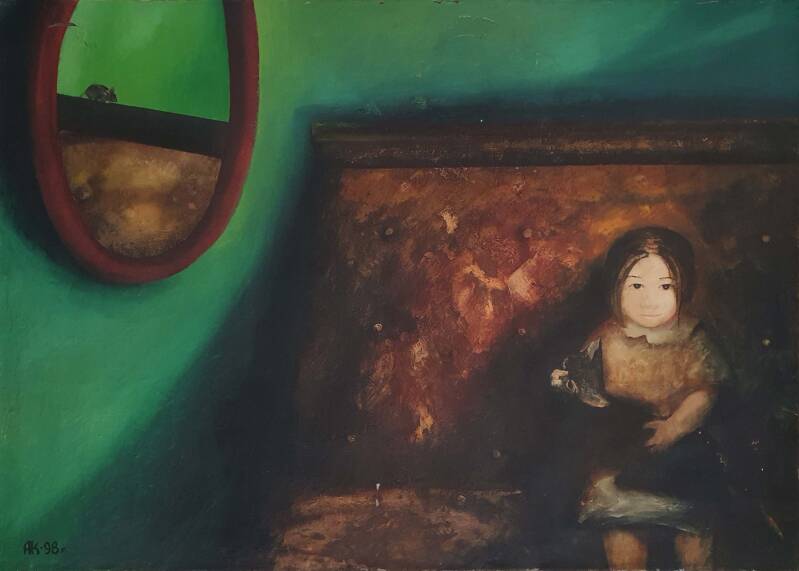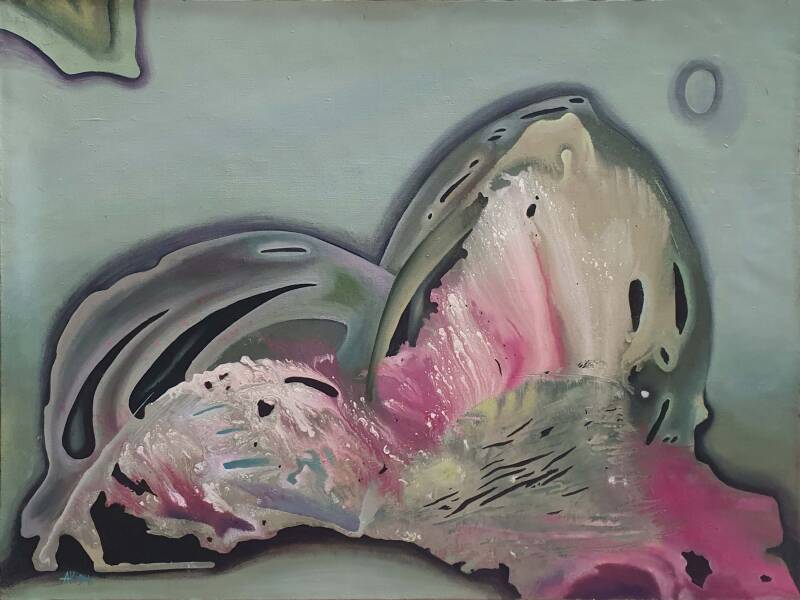ALEXANDER KUTAYEV
In the Shadow of Time:
The Story of Alexander Kutayev
Alexander Kutayev is more than just an artist. He is a chronicler of his time, a visionary who continually redefined the boundaries of what is possible. In a world that often shied away from the truth, he painted it in all its raw, unvarnished glory. His legacy, captured in the colors on canvas, remains a bright testament to his creative spirit.
In the shimmering aura of the Leningrad (St. Petersburg) art district, where the silent voices of the past still whispered in the corners of the cool gallery rooms, began the unusual journey of Alexander Kutayev. As a 14-year-old, influenced by Pavel Filonov, in whose former apartment he was able to set up his studio thanks to Filonov's sister, his passion for the avant-garde was ignited. He was not only a child of art but a rebel, whose brush stroked against the gray facades of the Soviet Union.
1974, a year etched in Kutayev's memory as a chapter full of tumult and triumph, he organized an exhibition that was meant to be a rebirth of the Russian avant-garde. But this event was more than just a collection of pictures; it was a cry against the oppressive stagnation of the USSR's cultural policy. The Soviet authorities, suspicious of any spark of subversion, sensed rebellion. The KGB, with its long arms and cold eyes, began to pursue Kutayev and his associates.
Despite the threats, despite the fear, Kutayev found in his art a form of dialogue. He knew that the significance of his works would only fully emerge in visual dialogue with those of his contemporaries and the public. This interaction was his credo, his way to reach the souls of the viewers.
He was always aware of the differences in the art scene at home and abroad. While in the West art was often traded as a commodity, the Russian market remained closed, inflexible, almost hostile. Kutayev refused to sell his soul to commerce but recognized the necessity of securing his livelihood through art. His art was not a product, but a necessity—a life elixir even in times of crisis.
The world of theater opened up new horizons for Kutayev. Here, he experimented with materials and forms, inspired by the drama and the multi-layered characters. This phase of his work was marked by a deep fusion of visual and narrative art, influenced by the literature he so cherished.
Kutayev never saw himself as part of any movement other than the avant-garde. He was an artist who did not seek inspiration but found it—in the people around him, in the streets of St. Petersburg, in the quiet moments of everyday life. These observations flowed into his works, making them so vibrant, so real.
Despite all adversities, despite persecution and isolation, he remained true to his homeland. In his later years, he often spoke of love and optimism for Russia—a country he deeply loved, despite all its physical and emotional scars from the regime.
Worldwide Exhibitions (selection)
Before 1986, it was nearly impossible to exhibit Kutayev’s paintings or make them public, as he was considered a persona non grata in the Soviet Union.
1989 Exhibition at the Journalists' Club, Leningrad
1992 "Biennale of Contemporary Art" St. Petersburg
1992 "Contemporary Painters from St. Petersburg" Zermatt/Switzerland
1992-93 December - January Russian Museum Exhibition of the "Art Collegium" in cooperation with the Russian Museum, St. Petersburg
1993 “Painting from St. Petersburg” Locarno/Switzerland
1993 “Contemporary Russian Avant-garde" Chiasso/Switzerland
1993 “Significant Russian Artists” Zermatt/Switzerland
1994 “Significant Contemporary Russian Artists” Zermatt/Switzerland
and in many other countries












